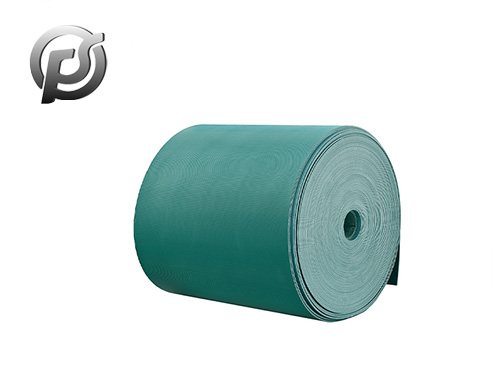Research shows that water ripple phenomena often appear in the
nylon conveyor belt conveyor belt and EP synthetic fiber conveyor belt, appear this kind of phenomenon the reason is that the nylon and polyester fiber will shrink after heated, with core after the rubberized fabric need internal gap will be less, nylon and polyester fiber after compression in central axis extending to both sides, The conveyor belt cannot be extended after meeting the cushion iron, so it will produce longitudinal water ripples. After the appearance of longitudinal water ripples, it will have an impact on the work of high temperature resistant conveyor belt. How should we avoid this phenomenon?
1. The width of the conveyor belt in production should be less than the width of the finished conveyor belt, and the width is 99% of the finished conveyor belt.
2. In the vulcanization, the width of the mold should be relaxed as far as possible, if the vulcanization width is 1500mm high temperature resistant conveyor belt, the width of the mold can be 1510±5mm;
3. Curing pressure can be increased appropriately, generally increasing 2.5-3mpa is more appropriate;
4. The belt should not be stretched too much during vulcanization, 1-2% is more appropriate, or according to the thermal shrinkage of canvas to determine;
5. Can be appropriate to increase the thickness of the nylon cloth and EP fabric rubberizing, high temperature resistant conveyor belt of the stick adhesive thickness to stick adhesive thickness thicker than ordinary conveyor belt, not only can reduce the appearance of quality defects, also increases the binding power of canvas layer between, especially under the condition of high temperature operation of conveyor belt, if the thickness of the glue is not enough, In the process of operation, there will be delamination between glue and cloth or cloth and cloth. However, nylon conveyor belt and canvas conveyor belt are less likely to occur because the core layer is soft and the hardness is small.
 Optimizing Operations with PE Conveyor Belts: Durability, Efficiency, and Versatility
Optimizing Operations with PE Conveyor Belts: Durability, Efficiency, and Versatility
 Exploring the Efficiency and Versatility of Light Conveyor Belts
Exploring the Efficiency and Versatility of Light Conveyor Belts
 Polyester Conveyor Belts: Enhancing Efficiency and Reliability in Material Handling
Polyester Conveyor Belts: Enhancing Efficiency and Reliability in Material Handling